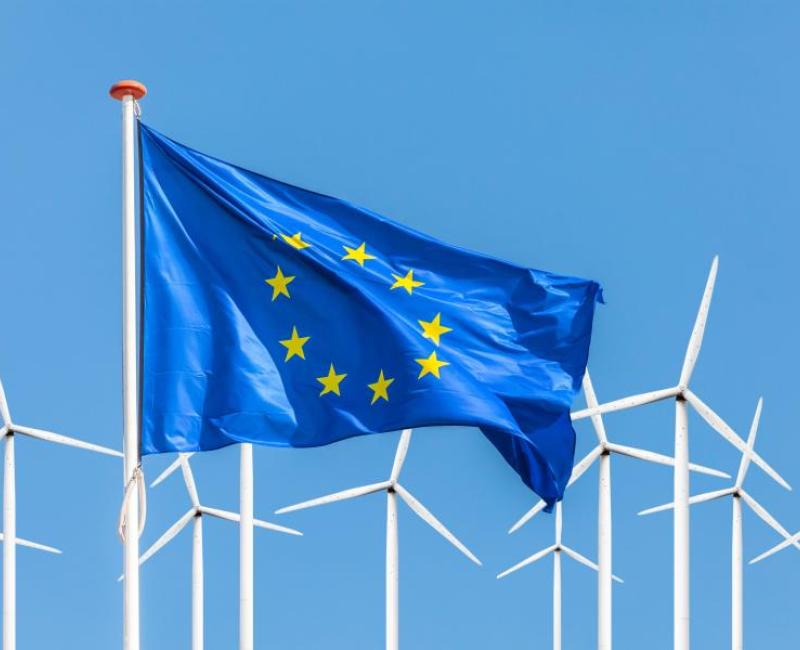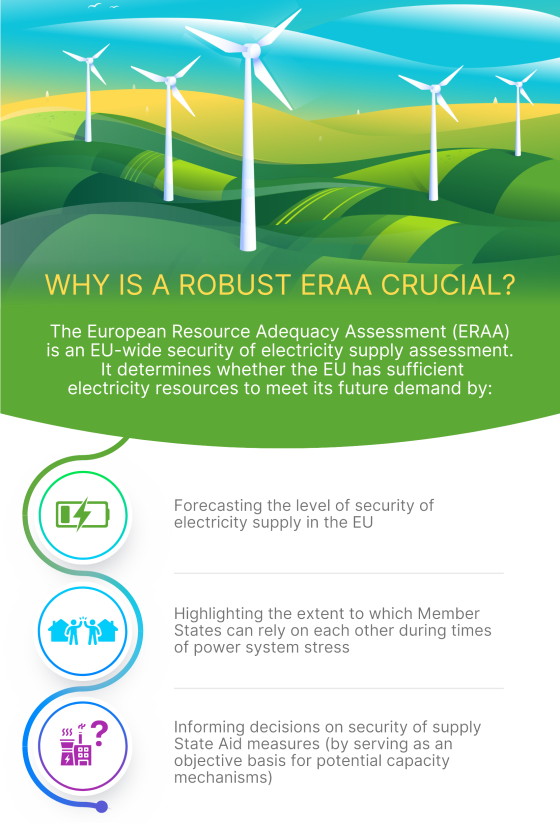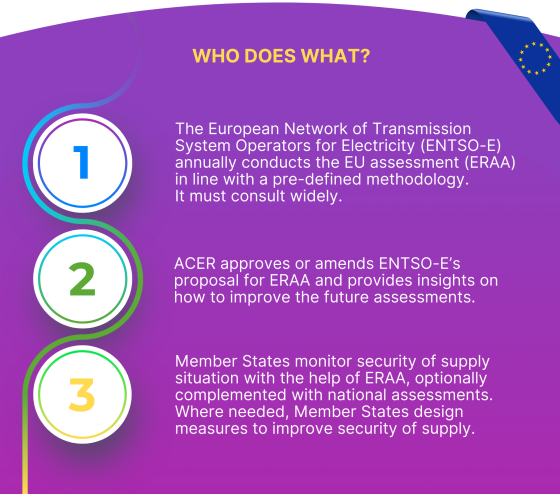European Resource Adequacy Assessment
What is it?
Mandated by the 2019 Clean Energy Package, the European Resource Adequacy Assessment (ERAA) is ENTSO-E’s annual assessment of the risks to EU security of electricity supply for up to 10 years ahead.
Following the approach of the ERAA methodology by ACER in October 2020, ENTSO-E must carry out an annual ERAA to assess whether the EU has sufficient electricity resources to meet its future demand.
At national level, Member States set their own electricity reliability standard to indicate the level of security of electricity supply they need.
At European level, ENTSO-E’s ERAA aims to identify potential electricity resource adequacy concerns in the EU and provide an objective basis for assessing the need for additional national measures ensuring security of electricity supply such as the introduction of temporary capacity mechanisms.
European Resource Adequacy Assessment
What is the role of ACER with respect to the ERAA?
ENTSO-E is required to assess, annually, the risks to EU security of supply in its ERAA. This assessment aims to provide an up-to-date outlook for 10 years ahead.
ACER has been closely involved in the development of the current EU adequacy framework and its implementation. ACER:
- approves the methodologies associated with the ERAA;
- engages with stakeholders and ENTSO-E to ensure the continuous improvement of the annual assessment; and
- reviews and approves ENTSO-E’s annual ERAA. ACER’s analysis includes the relevant scenarios, assumptions and results (see below the ACER decisions on the ERAAs).
For the second consecutive year ACER endorsed ERAA. The latest approval of ERAA 2024 confirms the assessment as a reliable tool in assessing security of electricity supply across the EU. As its relevance grows, so does the need for continuous improvements in future editions, as highlighted in the latest ACER Decision.
European Resource Adequacy Assessment
ERAA 2025: Track ACER's involvement
ACER engages throughout the year with ENTSO-E and other stakeholders, communicates its views and strives to resolve pressing matters.
1. Reaction to the ERAA 2025 preliminary input data – April 2025
In its initial views on ENTSO-E's call for evidence, ACER:
- assessed the assumptions for ERAA 2025 (including demand, demand response, economic and technical investment parameters);
- advocated for greater data transparency to ensure efficient data scrutiny; and
- shared its dynamic dashboard to facilitate stakeholders’ understanding of the data behind the ERAA.
2. ACER’s Decision on ERAA 2024 and ENTSO-E's methodology webinar – August 2025
The ACER Decision on ERAA 2024 identified three priority areas where further improvements are needed:
- strengthen the consistency between modules to ensure proper investment signals;
- apply more robust approaches to model demand-side response and outages; and
- increase the transparency of underlying assumptions and data to ensure clarity and facilitate stakeholders’ engagement.
The same recommendations were communicated by ACER in ENTSO-E's methodology webinar, organised to promote a better understanding of the methodological evolutions of ERAA 2025.
3. ENTSO-E submitted its proposal for ERAA 2025 for ACER approval in December 2025




